
What makes a luxury car? Is it size, power, gadgets, and prestige, or just a soft ride and a lofty price tag? Humorist Jean Shepherd and automotive iconoclast Brock Yates confronted that question in this 1972 “Viewpoint” editorial for Car and Driver, where they tried to come to grips with the biggest, priciest, and yet somehow least distinguished of Ford’s flossy four-seat Thunderbirds.
Shep and Yates On the Road
Most Americans (and many Canadians) will be most familiar with humorist Jean Shepherd from the 1983 film A Christmas Story, which is based on several chapters from his 1966 novel In God We Trust, All Others Pay Cash. However, before the film, Shepherd had a lengthy career as a radio personality, short story writer, and essayist whose work appeared in the likes of Playboy and The Village Voice. (You can find more about Shepherd’s work on Jim Clavin’s Flick Lives website.) From 1970 to 1976, Shepherd was also a regular contributor to Car and Driver, with his own column in some issues.

The late Brock Yates was of course a fixture of the Car and Driver editorial team for decades, as well as the author of several books, including the 1991 biography of Enzo Ferrari on which Michael Mann’s dreadful 2023 biopic was ostensibly based. However, while the article presented here is credited to Yates, it has so much of Shepherd in it that I think it’s probably best regarded as a joint work.
When this article appeared in the February 1972 Car and Driver, the Ford Thunderbird had just been completely redesigned for the sixth time, shedding the pronounced “beak” of the previous generation along with the slow-selling four-dour Landau model. So far as I know, Car and Driver hadn’t given the ‘Bird a full-road test since the 1967 model (which they had compared with the FWD Cadillac Eldorado), and wouldn’t again until the debut the intermediate-size 1977 ‘Bird; the Big ‘Bird just wasn’t the editors’ cup of tea. To be perfectly honest, I feel similarly about the 1972 Thunderbird, which looked like nothing so much as an over-inflated Mercury Montego with thousands of dollars worth of tinsel, lacking even the silly gimmicks that had made the 1958–1966 ‘Birds so endearing.


Base price of a 1972 Thunderbird was $5,293. The car Shepherd and Yates drove on their trip to Rochester through the Delaware River Valley had an as-equipped list price of $7,967, which suggests the presence of nearly every non-conflicting option on the RPO list except, surprisingly, the four 460 cu. in. (7,536 cc), a $75.97 option that gave you 12 extra horsepower and 15 lb-ft more torque than the standard 429 cu. in. (7,027 cc) engine. Since Yates and Shepherd got less than 10 miles to the U.S. gallon with the 429, perhaps it was just as well. (The early ’72 brochures list the 400 cu. in. (6,590 cc) two-barrel engine as standard, but it’s unclear to me if any cars were actually built that way; I’m thinking no, but some ‘Bird fanciers may know differently.)

Yates sets the tone for the article in the opening paragraphs:
Now picture this: Jean Shepherd and I are rolling upstate. We are headed for Rochester, hissing through early winter rain squalls in the Delaware River Valley in this $7967.00 Thunderbird. It is silent inside, save for a muffled rhythm oozing from the $150 AM/FM stereo radio. I have just extended the $31 power antenna to its limit in order to get maximum reception in the hills.
Shepherd adjusts his half of the $265 six-way power, split-bench front seat and rolls down his $133 power side window (with the $52 tinted glass) to let a little pipe smoke escape into the cold, damp air. Even with the car’s $448 air conditioning working at full efficiency, the atmosphere inside tends to thicken and become laden with pipe smoke after a few hours.
“Listen, I can flip open our $518 power sun roof for a little extra ventilation if you want,” I suggest as the wipers make another pass.
“That’s OK, I just don’t want to smell up the $65 leather trim with pipe smoke,” says Shepherd. “By the way, where is the $65 leather trim?” he says, looking over the expanse of green vinyl that covers the inside of the car.
Yates makes much throughout of the prices of the Thunderbird’s various features, a surprising number of which were extra-cost options. Those following along at home may note that the prices quoted in the text don’t necessarily jibe with those in other sources, like the Standard Catalog of American Cars or John Gunnell’s T-Bird: 40 Years of Thunder. Whether these discrepancies reflect editorial errors or midstream price adjustments, I couldn’t tell you. Gunnell gives the price of the SelectAire air conditioning as $436.52 — for which you were still expected to adjust the temperature settings yourself, like a peasant (automatic temperature control added $69.16) — and the list price of the power sunroof as $504.80. (To spare you the trip to the Bureau of Labor Statistics Consumer Price Index Inflation Calculator, on a CPI basis, $1.00 USD in January 1972 had about the same buying power as $7.68 in November 2024.)

Yates continues:
We talk of important things; about the glory days of Martin Block’s “Make Believe Ballroom” and why all the “with it” people love John V. Lindsay, who is a rotten mayor and hate Richard Daley, who at least makes Chicago work with his powerfully effective stone-age politics.
Finally Shepherd says, “You know, this must be like H.L. Mencken and George Jean Nathan out scouting the hustings . . . and examining the national mood. But I wonder about this car. Would Mencken and Nathan ride around in a Thunderbird? I’d sort of imagined those guys in a V-12 Packard Phaeton or maybe a Marmon roadster. Yeah, H.L. Mencken and George Jean Nathan out cruising among the natives in a Marmon Model 34 Sport Tourer . . .”
Some annotations are in order here: Martin Block (1903–1967) was an early music radio disc jockey, launching his Make Believe Ballroom series in 1935. Towards the end of his life, he appeared periodically on WOR-AM in New York — as did Shepherd, who had a late-night show on WOR from 1962 to 1977. (In fact, in 1966, Block had called into one of Shepherd’s broadcasts to chat about cars!) John V. Lindsay (1921–2000) was mayor of New York City at the time this article appeared, while Richard J. Daley (1902–1976) was mayor of Chicago. As for H.L. Mencken (1880–1956) — the famously cynical, frequently misanthropic journalist for the Baltimore Sun, probably best known today for his coverage of the 1925 Scopes trial (a lightly fictionalized version of him is featured in the play and film Inherit the Wind, which is about that trial) — I would bet money that the erstwhile “Sage of Baltimore” was a strong influence on Brock Yates, who was just as opinionated and every bit as elitist, if never half as eloquent or erudite. (I hope that Yates at least wasn’t the virulently racist, antisemitic bigot Mencken’s papers reveal him to have been.)

George Jean Nathan (1882–1958), meanwhile, was a drama critic and magazine editor, an old friend of Mencken’s and at least his match in acidity; the character of Addison De Witt in All About Eve was based on Nathan. (If you’re wondering, “hustings” is a now-archaic general term for election campaign events such as debates and speeches; Mencken covered many, which honed his talent for invective and disdain for the American public to a fine edge.)
Back to the cars: There were 12-cylinder Packards from 1916 to 1923 and again from 1932 to 1939, originally called Twin Six and later Packard Twelve. The early Twin Six had a 424 cu. in. (6,950 cc) L-head V-12 making 85 horsepower. As for Marmon, the Model 34 (so named for its taxable horsepower rating) was offered from 1916 to 1924. It had a 340 cu. in. (5,560 cc) OHV six, producing about 84 hp. Needless to say, these were both very expensive cars, with price tags in the realm of $5,000 — several years’ salary for most people at that time.


Yates continues:
It is raining hard now and apparently turning colder, because the windows are fogging up, so I flip on the $84 electric rear window defroster. A red light immediately begins to glow on the dash, which may or may not be part of the $45 “convenience light group” on our ’Bird. The rain is coming across the four-lane in sheets, but the car, all 4910 pounds of it, tracks steadily through the slop on its Michelin radials (included in the $5295 base price but with a $32 surcharge for white walls). I re-adjust the $52 tilt steering wheel to get a better purchase and mentally prepare myself for evasive tactics, should one of the other cars near us spin out of control. I think about the brakes, including our $194 Sure-Track, non-skid control system, which the guys trapped back at C/D in Manhattan claim tended to lock up all the wheels, rather than just one at a time, and hope I don’t have occasion to stop fast.
Sure-Track was an electronically controlled rear antilock braking system developed by Kelsey-Hayes, first offered on the Lincoln Continental Mark III in 1969. Since it didn’t prevent the front brakes from locking in a hard stop, its value in maintaining control was not always great (the similar rear antilock systems offered on the Cadillac Eldorado and Oldsmobile Toronado around this time were more useful because their pronounced front weight bias provoked early rear lockup). However, I can’t see that having it would be worse than not having it on a car of the Big ‘Bird’s weight.

The text continues:
The rain is beading on the long green hood.
“Man, somebody really gave that hood a waxing,” comments Shepherd.
“Maybe that’s a feature of the $166 glamour paint,” I say.
“‘Glamour’ paint?”
“Yeah, glamour paint. After all, you wouldn’t want to spend eight-grand for a Thunderbird and pass up the glamour paint, would you?” I add, soto voce [sic] “Besides, with that you get the double pin stripes.”
“I suppose you’re right,” says Shepherd. Especially when you order it with the $141 vinyl roof. Then you’re buying yourself some real class.”
During the ’70s, Ford and Lincoln-Mercury got a lot of mileage out of special paint options, which were a relatively low-investment way to milk some extra dollars out of well-heeled suckers. Despite its price discrepancies, Gunnell’s Thunderbird options listing offers a number of relevant points in this area: First, if you didn’t order the Glamour Paint option, you could still ask for the dual accent stripes as a separate $12.62 option. However, if you did select one of the eight Glamour Paint color choices, you also got matching color-keyed wheel covers — and, if you also ordered the padded vinyl top (mandatory if you wanted the power sunroof), you received special “tooled silver landau bar inserts” as an additional mark of distinction. As Shepherd said, real class, top to bottom.

The sepia-toned photos in the C/D article don’t make it clear exactly what color their Thunderbird was, and there were two Glamour Paint greens in ’72: Green Fire and Lime Fire. My guess is that there car was actually Green Fire with Dark Green leather/vinyl interior; rather than the Lime Fire of the car in the auction listing. For comparison, here’s the only Green Fire car I could find:



Continuing the text:
The squall passes, but I let the $26 intermittent windshield wipers keep running—they make one sweep across the windshield every 15 seconds—finally their delayed cadence begins to drive me nuts and I have trouble figuring out how to turn them off.
“This is a very quiet car,” says Shepherd as he turns the radio to an FM stereo station, causing yet another light to blink on the dashboard. “However, it is not a luxury car. Detroit figures that if a car is quiet and rides softly it is automatically luxurious. Not so. You can buy a cheap-o business coupe that does that. To be truly luxurious in a way that you might define luxury in an F. Scott Fitzgerald novel, you’ve got to have something more than a soft ride. Take this car for example. Now where in the hell are the little crystal glass flower vases that you always got in your average Pierce Arrow or Rolls sedan?”
“Hell, there isn’t even a lap robe or grip straps in this thing,” I note disappointedly.
“Listen, don’t look now, but I can’t find burled walnut fold-down trays for the back seat passengers or even curtains should you want to keep the proles from looking in. Now how can they get away with calling this thing a luxury car if they haven’t got any curtains?”
“It isn’t a luxury car. I know that because it doesn’t come with a special compartment to carry my golf clubs.”
“You mean you’ve got to put them in the trunk? How gauche can you get?” says Shepherd as we silently sail further into Southern Tier twilight.


Next, our intrepid authors find that a “low fuel” light makes few allowances for decorum:
The “low fuel” light glows steadily by the time we get to Binghamton. The ’Bird has gone 180 miles on a tank of gasoline, meaning we are getting less than 10 miles to the gallon. We pull off the freeway and into a small gasoline station with an outdoor john.
“H.L. Mencken would never have stood for this,” grumbles Shepherd as he slams the wooden door shut.
“This here must be a new Thunderbird,” says the attendant with that nasal hard ‘A’ dialect of the region as he pumps in a fresh load of gas. “It must cost a pretty penny.”
I tell him how much the car costs.
“God. An eight-thousand dollar Ford,” he says, eyeing me suspiciously.
“I don’t own it,” I add hastily. That seems to comfort him slightly . . . but he never says another word to either of us.
We are off again, having clasped the $17 deluxe seat belts, which causes a great, red-eye “fasten seat belt” sign to turn off on the instrument panel.
Apparently, the Thunderbird nameplate no longer commanded quite the awe it once did in the hinterlands by 1972.

Yates continues:
Shepherd is getting more incisive in his observations about the interior of the car. “Luxury does not mean silence,” he reiterates. “This ash tray is pure Falcon; better suited for depositing bubble gum wrappers than the ashes from a fine cigar. Look at all the nice little amenities that are missing. Where is the arm rest for the rear seat? Is there a place to put odds and ends like sun glasses, toll tickets, small change, etc.? None whatsoever. Just this tiny little glove compartment.”
“You might be able to special order a thing like that,” I say defensively. “After all, you can’t expect everything to be fitted as standard equipment.”
We roll onward toward Rochester, marveling at the silence of the machine, although tempering our amazement with the knowledge that this two-and-a-half-ton, four-passenger car has got to be laden with more insulation, dum-dum and sound absorbent material than a recording studio. Its immense 429 cubic inch engine seems to be guzzling fuel at a fearsome rate, despite the fact that it is producing a mere 212 SAE net horsepower.
“I just thought of something else,” says Shepherd. “Even my Fiat 124 has a map light and a trip odometer. This hasn’t got either one of them.”
“You are becoming hyper-critical,” I warn. “The next thing, you’ll be complaining that it doesn’t have a set of fitted tools.”
Perusal of Gunnell’s options list reveals that the 1972 Thunderbird could be ordered with a trip odometer, which was part of a $132.51 “Turnpike Convenience Group” that also included cruise control and an individually reclining passenger seat back. The Convenience Group that included the low fuel light theoretically also included dual map lights, so perhaps Shepherd and Yates just hadn’t noticed them; clarity of minor controls was seldom a Thunderbird strong point.

Moving on:
“Luxury means more than silence,” says Shepherd a third time before veering into a long and eloquent remembrance of the sight-seeing marvels on New Jersey’s festering Route 22, including the Flagship, the Great Eastern discount store, the Leaning Tower of Pizza and a cement statuary emporium.
We get to Rochester in time to bog down in the evening rush hour. I re-adjust my $13 outside remote control mirror so that it effectively scans the jumble of vehicles weaving and lurching behind us.
“That gear shift knob is humiliating,” says Shepherd disdainfully.
“What do you mean, the gear shift knob is ‘humiliating’?” I ask.
“Just look at it. Some kind of cheap casting—maybe even plastic. Can you imagine Gatsby rolling down from the estate to the train station in a car with a fake chrome gear shift knob?”
“Figure it this way. The steering wheel looks like it belongs on the Pinto, so wouldn’t it be a bit incongruous to have it cheek by jowl with an alabaster or mahogany or jade shift knob? But I agree, the thing is humiliating.”
Were it not for the potential problems it might cause with federal safety standards, I could see a ’70s Thunderbird offering a “Deluxe Shift Knob,” although in keeping with the general ambiance about which Shepherd and Yates were so vexed, it would probably have been a hunk of cubic zirconium, or maybe a Swarovski crystal the size of an apricot. Whether that would have been more or less humiliating is a tough call.
Here are some of the Route 22 landmarks of which Shep spoke:



The final page:
(The first part of this section’s text appears on the bottom of the previous page, but I’ve joined it here for clarity.)
“Man, this is a pretty tough neighborhood,” says Shepherd, looking out at a shadowy group of men lurking in front of a dingy saloon. “You could get yourself hurt around here,” muses Shepherd as he activates the $61 power door lock group. The door locks snap with a sharp electric/solenoid zzz-chunk.
We are stuck in traffic, and it makes me relieved to know that our ’Bird is equipped with the $26 bumper protection group, the $34 body side protective mouldings and the $26 rocker panel mouldings. When the going gets tough, you like to have the best equipment available, I always say.
We roll into the parking lot of the Ramada Inn where Shepherd is the guest speaker at the annual meeting of the Rochester Society of Communicating Arts. The marquee out front says, “Welcome, Jean Shepherd.”
I turn into a dark parking space thanks to the $34 front cornering lights, and the ’Bird eases to a halt. The engine is shut off and we leap out of the car as somewhere deep inside a “thwump” sound indicates that the $26 automatic seat back release has activated, thereby permitting the rear seat passengers (if there are any) to exit without groping for any annoying “Nader knobs.”
We lift our gear out of the smallish trunk, taking note of the $13 felt spare tire cover, and head for the hot-breath Louis XIV lobby.
For 1973, the Thunderbird would get 5-mph bumpers, for the complete urban traffic protection package. Given the dubious aesthetic merits of most ’70s American cars (the Thunderbird included), I don’t think they hurt the T-Bird’s looks any more than did the ugly new egg-crate grille added for ’73, and the big bumpers DID help to keep the proles away from your fancy paint; call it a draw.
“Wait a minute,” I say, halting in the drizzle. “There’s one last chance.” I turn and head back for the car. Shepherd knows exactly what I am thinking and falls into step. I jump into the driver’s seat and turn on the engine. Shepherd is standing by the front of the car, looking very serious. I hand him a shiny new Eisenhower silver dollar. The engine is humming in an easy, but slightly lumpy idle. Shepherd is bent over the hood. He is trying to balance the silver dollar on the great expanse of metal.
Time and again, hunched over in the parking lot of the Ramada Inn in Rochester, New York with a cold autumn rain falling out of the black sky, he painstakingly attempts to stand the dollar on its edge, just like you were supposed to do with those big Packards and Rolls of yesteryear. Each time the dollar flops over like a one-legged mannequin. Suddenly Shepherd snaps upright. “Wait a minute. This is a 1972 ‘luxury’ car. Obviously we must use 1972’s coin of the realm as well.” A Carte Blanche card is pulled from the pocket of his Dax. It is no problem to wedge it into the grille shroud.
“It’s a good thing Gatsby never knew it would come to this,” says Shepherd, heading for the light.
For some readers, the very funny punchline may be spoiled somewhat by the dated topical reference. The Carte Blanche card was an upscale credit card of the ’60s and ’70s, first issued in 1958 and phased out in the ’80s; it was roughly comparable in implied prestige to an American Express Platinum Card.


I would ordinarily have cropped or blurred the portion of the Capri ad in the right column of the last page above, but I think it makes an important point germane to the Yates-Shepherd column itself. In the ad copy, Lincoln-Mercury brags of the Capri’s array of actual and simulated luxury features — “soft vinyl that looks and feels like real leather” and a “sophisticated instrument panel with handsome woodgrain effect” — boasting that the “sexy European” was “ready to take on cars costing twice the price.”

The dilemma the Thunderbird presented, from Yates and Shepherd’s point of view, was that it went the opposite direction: Despite its higher price and supposedly upscale positioning, the Big ‘Bird still felt too much like a car half its price, however much sound deadening it had or how many extra-cost convenience items the buyer ordered. What did the Thunderbird really offer in 1972 that you couldn’t get on a Ford LTD Brougham hardtop for at least $1,200 cheaper? The full-size Ford brochure for 1972 said of the LTD Brougham, “You can pay more for a luxury car. But you can’t get much more luxury.” Judging by the Thunderbird, it was hard to argue that point, at least for anyone shopping at U.S. Ford dealerships in 1972.

For some people, part of what makes a luxury car has nothing to do with any tangible attribute, but concerns the rather more ephemeral areas of prestige and heritage. The references to The Great Gatsby seem fitting in this respect: Jay Gatsby in the Fitzgerald novel had been a poor Midwestern kid, and all his dubiously acquired millions could never buy him the love or respect of the old-money upper crust who came to his parties and drank his booze, just as an $8,000 Thunderbird with every convenience item on the options list was still an $8,000 Ford, at least in some circles (including certain upstate New York filling stations, apparently).

However, in the auto industry, unlike in Fitzgerald’s West Egg, money talks louder than breeding or class. For Ford, as for almost every other automaker on Earth, the one essential, defining characteristic of a luxury vehicle was (and remains) P-R-O-F-I-T. Ford sold almost 300,000 of the “Big ‘Bird” T-Birds from 1972 to 1976, through the worst of the Energy Crisis, and made a fat stack of cash on almost every one. So long as it made money, who cared if the woodgrain was a veneer, all the chrome was plastic, and the shift knob was “humiliating”? If there were 300,000 suckers willing to pony up an extra two thousand bucks for the Thunderbird name and a few hundred more for the Glamour Paint with matching lime-colored wheel covers, who was going to tell them no? Nobody in Dearborn, baby! It’s the same thing that drives the proliferation of posh luxury trucks today. As Mencken famously said, “Nobody ever went broke underestimating the taste of the American public.”
Maybe the real question now is not whether the Thunderbird was a true luxury car, but whether Gatsby would have driven a Lincoln Navigator …
Related Reading
Garage Find: 1972 Ford Thunderbird – A Less Remembered ‘Bird? (by Rich Baron)
Vintage Car And Driver Comparison: 1967 Ford Thunderbird And Cadillac Eldorado – A New Contender Enters The Personal Luxury Car Wars (by Rich Baron)
Christmas Classic: 1937 Oldsmobile Six – “A Christmas Story” (Mike Butts)






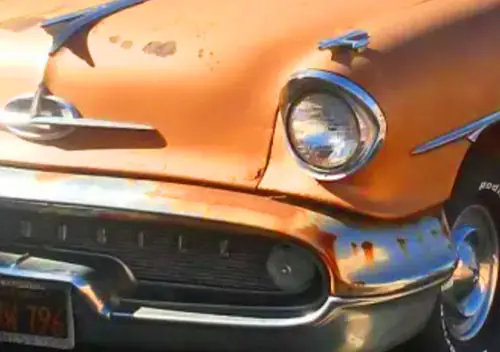
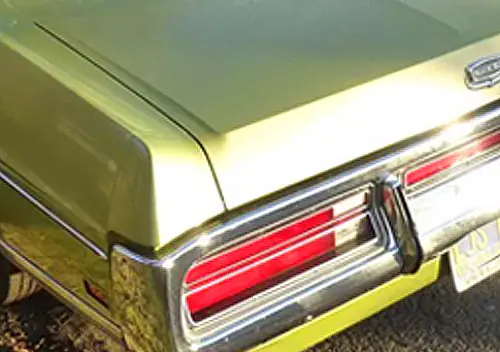
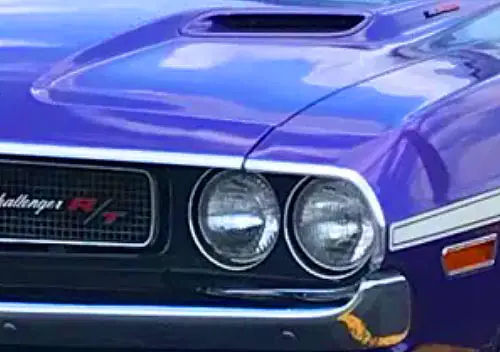

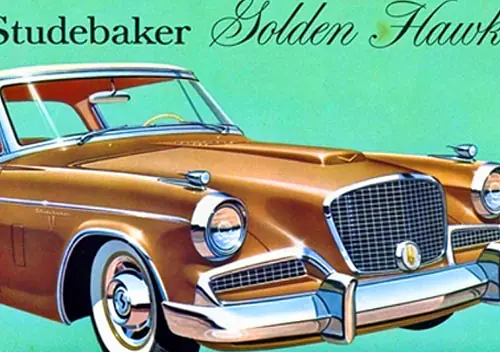
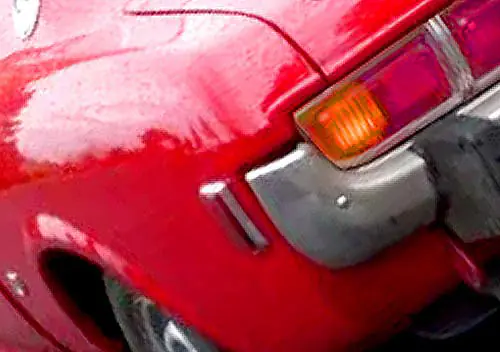
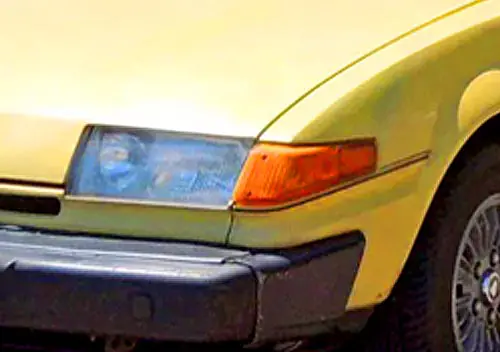
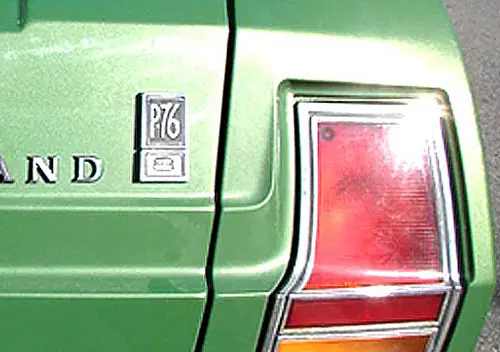
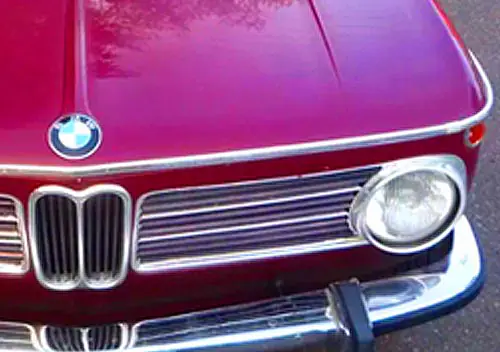
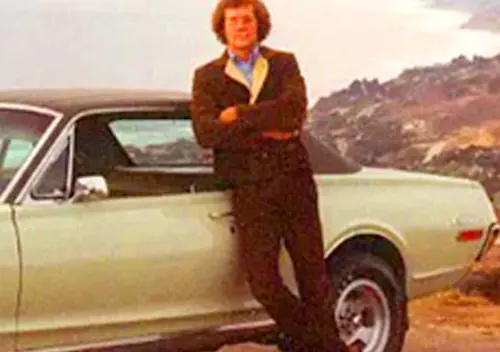

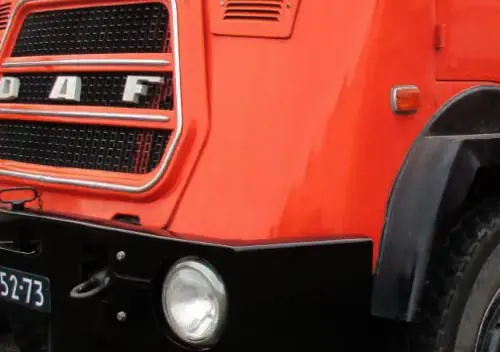
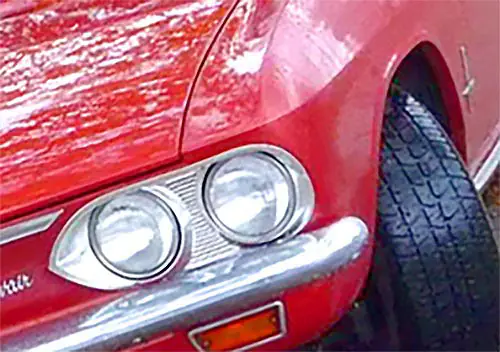
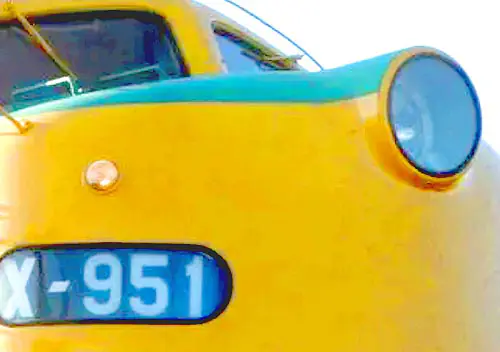
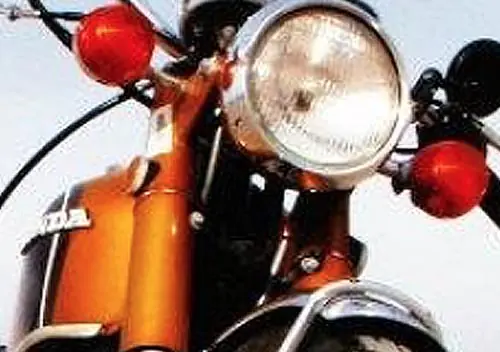
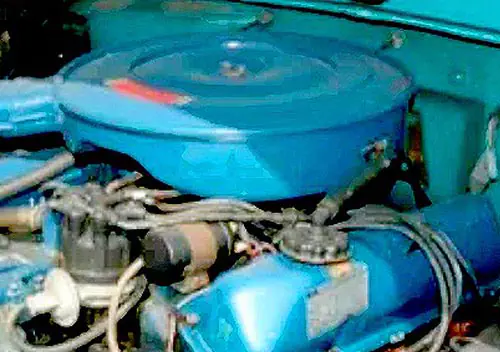



Somewhat ironic, there’s a Mercury Capri ad next the Car & Driver article of the Thunderbird. Talk about two extremes.
Back then, I would have grabbed the Capri in a heartbeat and never looked back. Today, that T-Bird would look at home in the driveway of my Ranch style house.
How your prospective changes as you age!!
Herb Gardner and Jean Shepherd were good friends. That is, until Gardner wrote a play (later movie) called A Thousand Clowns which Shepherd felt was based entirely on him. Gardner steadfastly denied it and the two never spoke, again.
FWIW, the movie (with Jason Robards in the lead role) is quite good, and for those interested in Shepherd’s life, it’s quite good. Martin Balsam won an Academy Award for Best Supporting actor.
I am sure Yates would have preferred to drive a Packard phaeton up Route 17 on a rainy December day, with the wind and rain blowing in through the side curtains, and a puny heater roaring under the seat roasting his feet and leaving the windshield foggy. He could listen to WAAL on a six-tube AM radio, assuming he could hear it over the noise of the V-12 and the squeaky vacuum wipers.
An excellent Sunday morning read. I’ll get to the car in a moment, but first I have to thank you for resurrecting memories of this old Car and Driver piece.
I’m fairly sure I read the original during some of the extended time I spent in my junior high school library’s periodical section. This was the type of piece I read car magazines (particularly Car and Driver) for. I was a glutton for that smooth talking, know it all/sophisticate, snarky banter…horrible art direction notwithstanding. (Well, ok, model in see-through-dress not withstanding that.) All of these guys eventually wore out their welcome, but it took a while, and at least for me at that time in life, this stuff was absolutely the joint.
As for the car, I’m fairly sure that reading stories such as this by Yates and Shepherd pretty much implanted the idea (in me, a non-driver at the time) that these early 1970s Broughamtastic American cars were ridiculous. This is an opinion I’ve held on to for over half a century, only softening it somewhat via the nostalgia that comes naturally with advancing age. In the same way that I’d love nowadays to see and photograph the Leaning Tower of Pizza (we have an identical one up here in Massachusetts on Rt. 1…our version of NJ’s Rt. 22), – something that I’d have found ridiculous in 1970 – and I’d probably not eat there then or now.
Anyway, I do like green exteriors. Green vinyl interiors, I’ll take a pass on that.
Rochester, NY sketchy neighborhoods and terrible traffic? Well, it’s good to know that some things haven’t changed in 50 years. Last I checked, that Ramada Inn was an abandoned building site out by the airport. But then again, Rochester probably hasn’t had a Society for Communicating Arts since about the time of Yates and Shepherd’s visit.
The sepia-tone photography is something that probably made sense at the pitch stage, but it just does not work at all, and having the magazine in front of you doesn’t help.
“horrible art direction” That’s the best part of this article, not saying it is great just that the actual writing is just comes across as phoned in.
My Stepfather in law had a full boat T-Bird from this generation. He’d been a working man for most of his life, switched to real estate and made it big. He retired at 45 and rewarded himself with one of these. To him, the more gadgets and ornamentation a car had, the bigger it was, the better it was. I suspect a lot of people who bought these felt the same way. It went well with his white belt and shoes. (He was a very nice guy though).
He was very proud of the car and kept it all his life. We all knew the car was important to him and why, but it was just a gross, awful pig of a thing to drive and not all that comfortable to ride in. It did turn heads though, for better or worse, and I suspect that was most purchasers of these were after.
Jean Shepherd’s comments/criticisms of this ’72 T-Bird reflect the fact that Shep was born in 1921 and grew up seeing the great classic luxury cars of the 20s & 30s. To him, the modern T-Bird did not live up to the stateliness and high standards of quality of a Packard V-12 or a Marmon. Fact is, luxury car buyers in 1972 did not want/need lap robes, golf bag compartments, crystal vases or curtains. Also it would be impractical and generally undesirable to style a car to look like a heavy classic of the 1920s.
Oddly enough, this T-Bird was designed for men of Shepherd’s generation. Build a modern car, but add (imitation) wood trim, landau bars, upright grilles, button-tufted seats, etc. to SUGGEST luxury styling cues of the Classic Era so fondly remembered. This gives everyone a “rich, yet nostalgic, yet hip” feeling riding in the car. Most “average” buyers didn’t care that the wood was fake or that the shift knob was a cheap casting. Loafing along in this smooth, powerful, and quiet Thunderbird surrounded by “luxury” trimmings and having the prestige of the Thunderbird name was enough for most people. The high sales numbers prove that.
When I was a kid, I probably would have agreed with Shepherd. I disdained the cheap fakeness and generally ugly shapes of Detroit’s new chariots, and I thought the old stuff (20s to early 60s) was much more appealing. But now in the age of generic-looking SUVs, this ’72 T-Bird is dripping with character! Seems it would be a nice car to cruise around in–and really turn heads! It would probably be a challenge to keep all those nifty power assists working–they (like the rest of the car) were all made under a strict regime of cost-cutting, and were never intended to last 50+ years!
I hope I’m quoting H. L. Mencken properly, my favorite is:
“No one ever went broke underestimating the taste if the American public.”
Mencken also called them the “booboisie.”
With Shepherd being born in 1921, that makes him the same age in 1972 I am currently. Yates and Shepherd both come across as being, uh, childish.
Having owned a 1975 Thunderbird for about six or seven years, yes, I agree with the assessment it had too many common Ford parts. Mine was also loaded up, with a sticker price of nearly $10k in 1975.
Even when I had that Thunderbird, I viewed it as somewhat of a novelty piece that I enjoyed. I knew it was from a time long ago, such as the Mormons and Packard that would be a comparable to at least Shepherd. The driving dynamics of my Thunderbird were terrible, but it was supremely comfortable, insanely quiet, and just made you feel good. It also conveyed a sense of power to the driver – having a 6 foot long hood out in front of you, topped with a flying bird, somehow generates confidence in a person.
I would also argue the questionable driving dynamics worked to make me a better driver.
In reading this piece, it seemed these two simply wanted to dislike this Thunderbird and to pick it apart. Really, with no vehicle being suited for everyone, all of them have elements that can easily be picked apart (or lampooned) by the non-fans.
Sure I got a faint smile out of Yates’s piece, perhaps due to my familiarity with this generation of Thunderbird, but others could also easily pick apart the cars these two liked. Sometimes doing so isn’t that hard to do.
I’ve been for a ride in a Mormon, but we broke up years ago.
I saw that, also – much later. Gotta love Apple’s spellcheck!
I remember reading this. And not liking it; two oldish farts grousing about how their free press car wasn’t as luxurious as the Packard V12 that neither of them would ever have been able to afford back in the day. And getting paid to do it.
Of course the TBird wasn’t my cup of T either. If they’d wanted a neo-Packard, they should have gotten a Mercedes 600. The TBird was just a gussied up Ford after all.
The part that was actually interesting is the listing of all the extra cost options. We tend to compare cars from the past by their base list price and forget that most had a number of options, especially the higher priced ones. Talk about nickel and diming….
Although I had personal experience with T-Birds up to 1966, but by 1972 I have no memory in my aging brain cells of this model T-Bird. It just didn’t register with me because maybe by then the T-Bird had lost its “uniqueness” especially compared to the 1972 Mark IV. I did have much experience with the 1972 Mark IV back in the day and found the Mark to be a very pleasant, highway cruiser. Was either one a better value for the money at the time, that would be hard to justify. To me perhaps the T-Bird was just a less expensive Mark. I think some people were just willing to pay extra for a name and its associated prestige.
This generation T-bird had the same chassis, drivetrain, and suspension as the Mark IV. I suspect by the time you added enough options to the T-Bird to match the standard equipment on the Mark IV, it wasn’t all that much cheaper.
Articles like this were a great influence on young, budding car enthusiasts like me – and probably many others. The underlying question is not “What is luxury?” but rather “What is good and valuable in an automobile?”
Thanks for a great write up! Interesting that pictures of the TBird up for auction look like houses in my neighborhood, largely built in the early 70s. I can picture a few of these cruising the streets then, just as pickups do today. Yet the comparison to today’s F150 as noted in the article is apt. Those trucks are some of the few vehicles left that offer some a la carte options. Though not anywhere near the nickel & dime detail of the TBird. I was actually quite surprised reading the level of individual detail that options got then. No wonder people special ordered new cars. While it seems quite inefficient today where parts are outsourced assemblies, I’ve read that at the time, increasing use of computers in manufacturing allowed the kind of scheduling to make all these nickel & dime options highly profitable.
I started at a small town Ford dealer as an apprentice during high school in the 60s and continued there through the early 70s.
Every year, our dealership got exactly one T-Bird which the owner drove. Like clockwork, it was sold as a demo when next year’s model replaced it. I can’t recall any other T-Birds passing through our doors during the entire model year.
As a demo, we saw each T-Bird in the shop on a regular basis. Never any trouble with the running gear – but those electrical accessories were something else. One model year in particular featured gold tinted heated glass that required the output of dual alternators.
Unfortunately it didn’t work properly on the bosses car. I had a crack at fixing it and failed. I didn’t feel so bad when the problem was escalated to more senior mechanics who also failed. We finally had to get the zone rep to send factory assistance. If this had been a customer’s car rather than a demo I can only imagine how disappointed the owner would have been.
Therein was the problem with these cars – in my opinion. All the gadgets may have been cutting edge technology for the time. For us Ford mechanics, each problem with an unusual gadget was a new learning experience.
Most Fords weren’t equipped like a T-Bird. Factory training was probably available, but small town dealers concentrated their training time on areas mechanics were far more likely to see. Even if we got the special training, many fancy-pants accessories were so rare that the training would likely be forgotten before it was ever used.
That gas station attendant wasn’t too far off. An $8k Ford in 1972 was a rare Bird indeed.
My father leased a new Mark IV in November of 1971. From the start, this car was (to me) a Mark IV on the cheap. The Lincoln carried a base price at introduction of $8800, a figure I recall from a magazine which pronounced it as the most expensive American car you could buy. That’s $3500 more than this Bird, so I wonder how much of that difference is differences in standard equipment and how much is the Lincoln upcharge.
I would argue that America was no longer in the business of building a true luxury car by 1972. Although many (me included) did not understand that then.
One thing I was wondering reading this article with its’ priced options was how much of that was thrown in with a Mark IV and how much still was optional on those.
I myself kind of enjoyed the continual listing of prices of all of the optional “features”. It got across the cost of everything, something I found difficult to do when I was writing about provided test cars other than listing them towards the end which while getting the information across made for a somewhat bulky paragraph or chunk of writing, however I felt it was important to do so. Still many readers/commenters exhibited trouble dissecting that a $50,000 test vehicle was perhaps really a $30k vehicle in its top trim level at another $12k and then with every possible option larded on top when most typical buyers would just choose a smaller smattering of selections or the same basic vehicle in a more basic package… This review was more in the style of a column in the likes of those penned by Barker in CAR or maybe David E. Davis.
And if it was anything like it is today, every test car would have been accompanied with a list (today it’s a Monroney) showing what everything cost for the reviewer to peruse. I noted multiple times in my endeavors that a given test car’s Monroney didn’t match with what the online configurator listed for options pricing while doing further research, prices did (and can do) change during the calendar year, almost always increasing of course, so their source may have been different or from a different publishing date than the lists that other sources may have had or used, pricing isn’t always stagnant over a given model year.
A Thunderbird of this era (or by this era in time) is really only a luxury car to someone that would struggle or only be able to justify something costing far less, along with pretty much anything wearing a Ford badge, witness the gas station attendant noted who seemed aghast at the price. But if you could swing it, being able to spec it out as you wanted with everything costing extra is a luxury into itself (and of course all of the configurations add cost to the build process, the main reason you don’t generally see it today. Enumerating to others what you spent is often part and parcel of the experience as well… Today you could do similar (the endless individual options spec’ing) in an upper line Porsche, and of course the more exotic cars but that’s really about it. Almost nothing starting under $100k (or maybe $150k?) today is actually particularly luxurious, one of the aspects of which is having something others do not, not when most “luxury” cars are sold off the lot with several packages and a couple of single line item pieces, really not much different than just buying an Accord or Explorer, i.e. there are dozens or hundreds or thousands of luxury car models equipped exactly the same as the one a typical buyer might choose which makes them not so “special” after all. Of course the packaging of everything together rather than making everything be separate items is what is able to bring the costs of the production process lower, which then allows former “luxury features” to just be included for everyone.
Interesting input (and I too was mildly amused by the accumulating list). So often in road tests, the cars are loaded, and back further in time, they even had options not really available to Jo Schmo – say, a tach – and the loadedness affects the assessment, especially in times past. “The GM Humblebum is very quiet at speed”: of course it was, you had the optional a/c that practically no-one added to it, or “Cornering is surpsingly tight” – well ,yes, because that sport suspension was fitted to 2% of actual cars, and isn’t even know of by most buyers. And so on. (Hasten to add, you always scrupulously drew attention to options and effects thereof).
Porsche’s option scam is borderline outrageous, but if the suckers are prepared to pay so much in the first place, I can only find it amusing.
As to high and low, the difference between a high-end Luxobubble and and a decent low-end Schmomobile is close to meaningless: such is a mature technology.
The democratization of the Luxury Car started even before WWII. Ford first made a car that was affordable to the common man with the model T. Then in 1932 he made a V8, a luxury engine, that was available to the masses. Back in the Teens and Twenties, the Rich were fewer, but the gap between them and the working classes was immense. The cars of the Rich were the Peerless, the Packard, and the Pierce Arrow, as well as other low production bespoke vehicles from smaller independent manufacturers.
These cars had capabilities that exceeded those of regular American production cars. They were larger, more comfortable, with more amenities and features that were standard, such as heaters. They were also much more powerful and had the ability to maintain higher cruising speeds as well as provide for safer passing opportunities on the highways of their time. This was coupled to the prestige that they enjoyed due to their expense and exclusivity.
The Great Depression killed off many of these marques and after the War, American luxury cars were primarily produced by the Big Three. However, they were still well differentiated from their mainstream products.
By the end of the 1950’s, mainstream models were available with modern OHV V8 engines, fully automatic transmissions, and even air conditioning. By 1955-57 the gap between the performance and comfort of a Cadillac and a fully equipped Chevy was shrinking. But a Cadillac was still viewed as desirable and prestigious.
Then in the mid 60’s, Ford introduced the LTD, and Chevy shortly afterwards the Caprice. Now the gap shrunk even more, and many buyers wondered if the prestige brands were really worth the extra cost.
All this begs the question; “what makes a luxury car a luxury car?”
Convenience and comfort features like automatic transmission, a/c, cruise control, power windows, and a good audio system are features that are appreciated by most buyers, and are now either standard or available on the least expensive new cars.
At one time, quality of manufacture, reliability and longevity were qualities of the top tier makes, but now popular priced cars like Toyota and Honda carry stellar reputations in that area, while other very expensive makes are known to become very troublesome once they exceed the original warranty period.
I once read that a maxim among the truly Rich is, “that one should never be uncomfortable, in whatever they are doing. Also, that hospitality should always appear effortless.”
I suppose that any vehicle that provides for your automotive needs and desires in a manner that conforms to those principles, can be considered to be a luxury vehicle.
The hallmark of luxury is exclusivity if you see your car coming the other way regularly it isnt exclusive, at all,
Automatic features included at the price is luxury extra cost add ons mean it was a peasants car with tack on glitz available,
I have a base model of what was a luxury car, if you bought a grade higher it came with everything but its only more electronic wizardry I dont miss or want if you wanted more space inside you could have that in the next model up but very few people did so that car was a flop, Exclusive? mine isnt, they built 50 exactly the same.
Oh, was there a car featured in there? I got focused on Jean Shepherd and Brock Yates and that was all it took. Yeah they, particularly Yates made their living writing about cars, but really, they, especially Shepard could write about pretty much anything, and be funny and entertaining.
None of the above is intended as a slight, not at all, more to the breath of their craft and their skill within it.
This article is of course not to betaken seriously, but it also doesn’t quite achieve what it sets out to do. Apart from a slight sniff of puerility noted by others, they don’t say what a luxury car used to be or what it SHOULD be, beyond the bandying of old brands, which ruins the irony nearly completely. (“I moved my feet on the carpet. It was not Wilton”). The joke is incomplete.
I did like the endless-option recital, and did like the punchline, as the cheap bit of plastic wedged in the grille hints at the consumer-product transactional nature of the car – just another card purchase.
As for that options list, I began to think it possible they were going to say “I opened the $97 optional door” eventually. So much basic stuff missing!
And as for that car, they’re quite kind to it when you think about it. They acknowledge the comfort, the purpose, and, whilst perhaps implied giving buyers a gentle skewering for their tastes and the cost of them, half of the implied joke is against Ford for fleecing buyers. They’re much kinder to the car than such a crass and incompetent piece of machinery ever deserved.
“The early ’72 brochures list the 400 cu. in. (6,590 cc) two-barrel engine as standard, but it’s unclear to me if any cars were actually built that way; I’m thinking no, but some ‘Bird fanciers may know differently.”
There were 2006 1972 Ford Thunderbirds produced with the 400-2V engine as per Marti Auto Works. A few are still around today.
All I see is a Ford Thunderbloat.
On a side note we had to work the day after Christmas this year. Walking past our directors office I noticed he appeared to have nicked himself rather high on his face while shaving. So being my usual smartass self I just had to ask him. did you get a Red Rider BB gun for Christmas? He thought for a second and without saying anything just started laughing. A Christmas Story is a classic movie.
I don’t remember this particular article but I remember seeing articles by Jean Shepherd in my dad’s old Car and Drivers but I wish I had read more of them. I loved how Yates listed out every option and I pretty much agree with their comments about how luxury isn’t just a quiet interior. Too many cheap components made their way into American luxury car interiors in the 1970s which opened the door to German and eventually Japanese imports to take over the US luxury car market.
It’s interesting that Shep’s fictional avatar Ralphie was driving a ’65 Plymouth Belvedere in 1972 in the movie “A Christmas Story Christmas” when the man himself had a Fiat 124 which would’ve been easier car-casting, Bulgaria having stood in for northern Indiana so presumably it would’ve been a simple matter to acquire a Lada 2101 locally and rebadge it.
The Plymouth was consistently misidentified as a ’66…